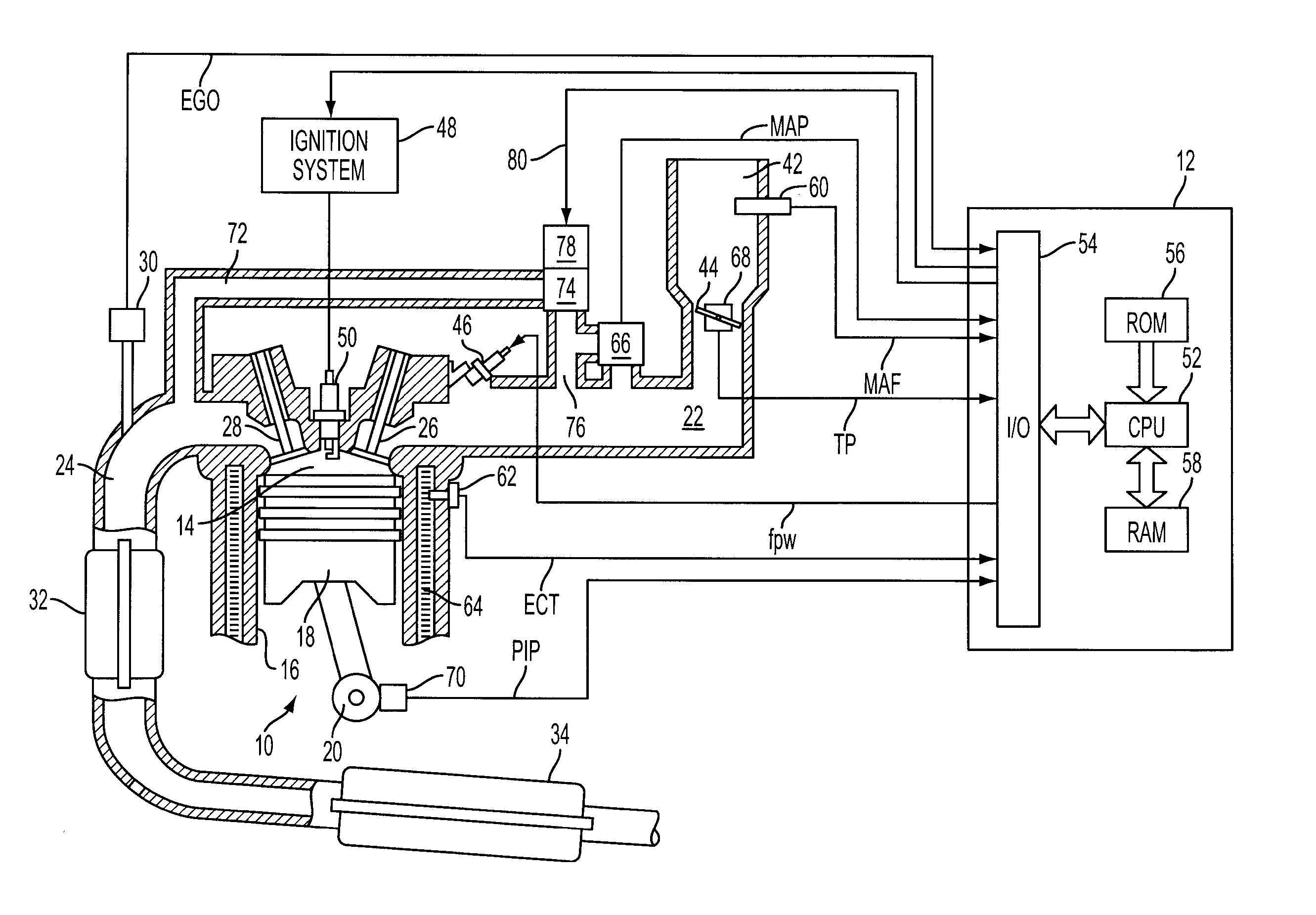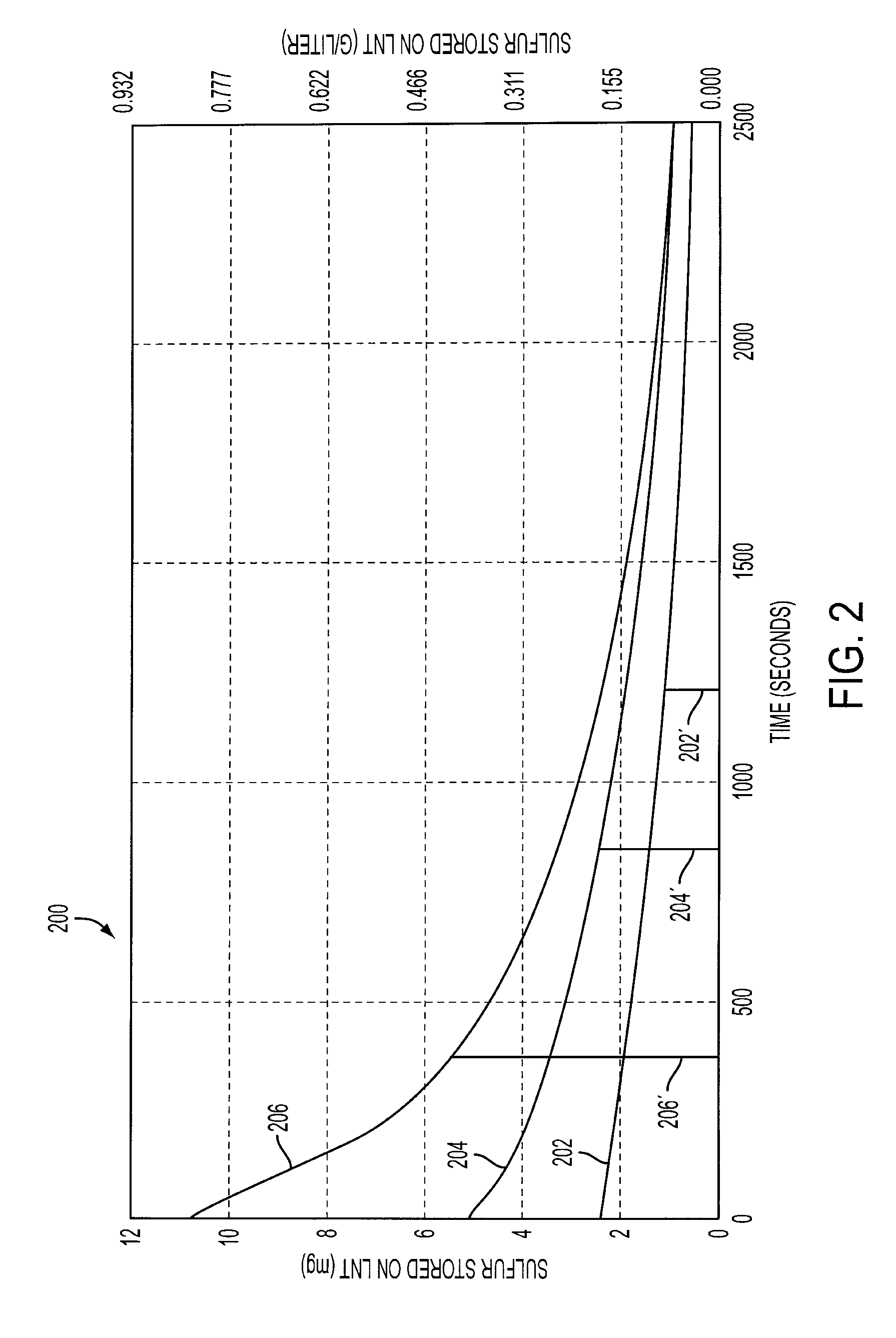System and Method for Desulfating a NOx Trap
- Summary
- Abstract
- Description
- Claims
- Application Information
AI Technical Summary
Benefits of technology
Problems solved by technology
Method used
Image
Examples
Embodiment Construction
[0010]FIG. 1 shows a schematic depiction of an exemplary embodiment of an internal combustion engine 10. Engine 10 is depicted as a port-injection spark-ignition gasoline engine. However, it will be appreciated that the systems and methods disclosed herein may be used with any other suitable engine, including direct-injection engines, and compression ignition engines including but not limited to diesel engines. Engine 10 typically includes a plurality of cylinders, one of which is shown in FIG. 1, and is controlled by an electronic engine controller 12. Engine 10 includes a combustion chamber 14 and cylinder walls 16 with a piston 18 positioned therein and connected to a crankshaft 20. Combustion chamber 14 communicates with an intake manifold 22 and an exhaust manifold 24 via a respective intake valve 26 and exhaust valve 28. An exhaust gas oxygen sensor 30 is coupled to exhaust manifold 24 of engine 10. A catalyst 32, which can be a three-way for a gasoline vehicle, or an oxidatio...
PUM
 Login to View More
Login to View More Abstract
Description
Claims
Application Information
 Login to View More
Login to View More - R&D
- Intellectual Property
- Life Sciences
- Materials
- Tech Scout
- Unparalleled Data Quality
- Higher Quality Content
- 60% Fewer Hallucinations
Browse by: Latest US Patents, China's latest patents, Technical Efficacy Thesaurus, Application Domain, Technology Topic, Popular Technical Reports.
© 2025 PatSnap. All rights reserved.Legal|Privacy policy|Modern Slavery Act Transparency Statement|Sitemap|About US| Contact US: help@patsnap.com



